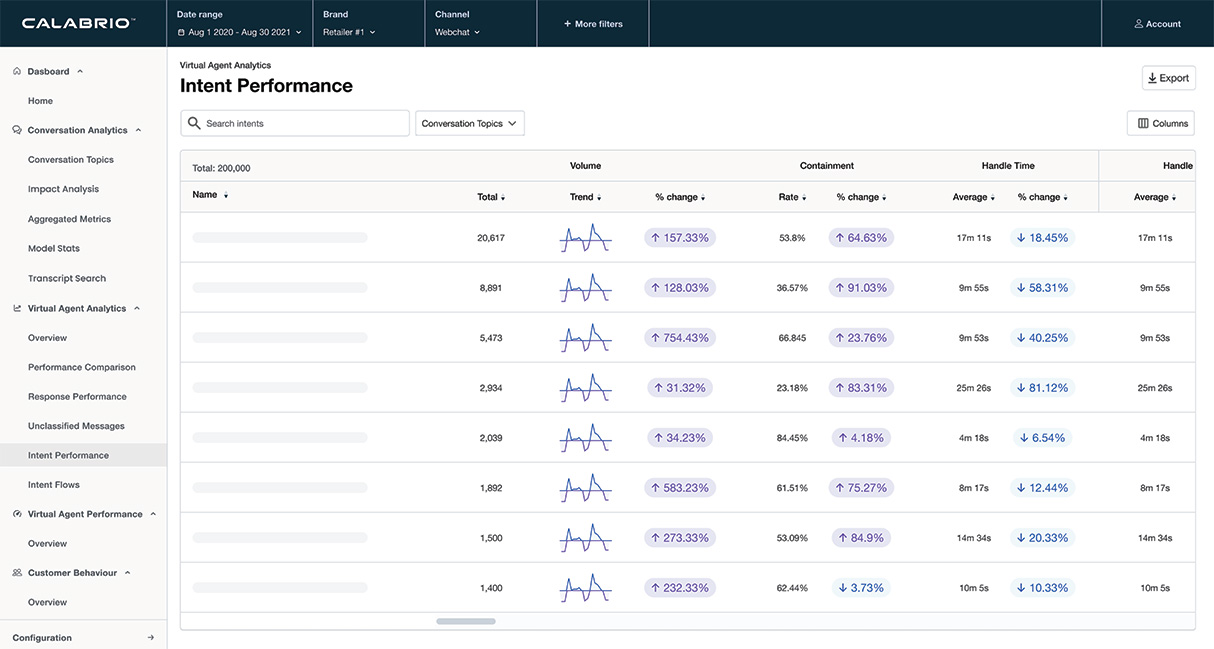The Magnificent Seven – A review of Workforce Management in 2017
The Magnificent Seven – A review of Workforce Management in 2017

Olle Düring looks back at an exciting year with a round-up of the 7 hottest topics affecting customers and contact centers.
Things are looking up for WFM in contact centers if the bold statement by DMG Consulting is anything to go by. President Donna Fluss says that “after more than 20 years of little innovation, the WFM vendors are waking up, and there are significant changes in this sector. Companies are taking notice of the enhancements and will invest if the new generation of WFM solutions lives up to the vendors’ claims.” DMG also expected the WFM market to grow by 8% in 2017 and 2018 and by 9% in 2019, 2020 and 2021, adding that the rate of growth could increase if the pace of innovation picks up.
This offers great opportunities for vendors like Calabrio to innovate and provide contact centers with the technology they need to perform at their very best and drive competitive advantage for the organizations they support. Calabrio’s own take on what’s happening in the industry is equally as upbeat with technologies such as self-service, Webchat and Chatbots making giant strides. With so much happening, it can be difficult to see the wood from the trees and focus on what really matters. To help put everything in perspective, here is a review of our 2017 blogs covering the seven hottest topics of the year.
The magnificent seven
- Changing priorities – making life easier for customers – today’s customers are not prepared to wait. Studies reveal that 45% of consumers are likely to abandon an online transaction if their questions or concerns are not addressed. Winning contact centers are those that deliver quick fixes, instant results and exceptional customer satisfaction. Ask yourself: “how do I help make life easier for my customers and give them back their valuable time?” Put yourself in your customers’ shoes to review your processes and technology and you can’t go wrong.
- Mapping the customer and agent journey in parallel – the world of customer service has massively changed and evolved in the last two decades. Gone are the days where a toll-free number was the only option for communicating with a company’s customer-service representatives. Digitalization has arrived with customers hungry to interact by email, SMS, mobile and Webchat. To create an exceptional customer experience, organizations must provide optimal service across all touchpoints by constantly evolving the way they manage their agents. Re-assess the value of agents to your overall organization. Today’s agents are ‘super agents’ capable of solving complex problems for their customers rather than simply answering the telephone and executing everyday tasks. Make sure you give them the right tools to do the job.
- Giving employees a voice – According to industry analysts Gartner, “The impact a motivated and engaged employee can have, not just on operational performance but also on the customer experience, should not be underestimated.” Organizations need to transition from simply optimizing their contact center staff to truly motivating and engaging them. It’s time to take Workforce Engagement Management (WEM) seriously. Start by benchmarking your own contact center and make sure your processes and technology focus on placing staff at the center of everything.
- Homeworking – the concept might not be new but it’s still very relevant and there’s firm proof that a ‘work from anywhere’ environment supported by WFM benefits customers, employees and the business. For example, organizations that use split or micro-shifts are likely to reduce labor costs by 15%-20% and companies that offer flexible working are rewarded with a staggering improved employee retention rate of 30%. What is more, consumer demand for immediacy is turning Webchat into one of the most popular channels for customer interaction and is easy to undertake from home.
- Agent preferences vs. shift bidding – resource planners are under constant pressure to achieve the best balance between what agents want to work and the forecasted needs of their contact center. Traditionally, they relied on shift bidding – releasing the schedule of shifts on offer and asking agents to bid for the shifts they wanted. While the process was good for initiating agents’ involvement in building their schedules, it was often time-consuming, inflexible and stressful for agents. Thanks to automation, the latest WFM functionality allows agents to enter their own preferences for shifts and days off, making it empowering for agents and time-saving for contact center leaders.
- Time-off-without-pay (TOWP) – with so much talk about flexible working and the reality of squeezed budgets, it would be hard to ignore the often contentious areas of zero and reduced hours in contact centers. Taking the middle ground with TOWP is a powerful alternative to flexible working that benefits both employers and their contact center agents. Learn to understand the psychology of work and then use WFM technology strategically to better control staff costs and provide a guaranteed, steady income for agents.
- Customer experience in the next 5 years – it’s all about value and experience with exceptional customer service forecast to outpace products and price when it comes to corporate success. Listen to the experts. Global analyst firm Forrester claims that 72% of businesses name improving customer experience as their top priority. To win, contact center leaders should start by embracing the new service culture, creating a truly omnichannel environment, introducing self-service, automating routine tasks and humanizing the workplace to deliver best practices.









